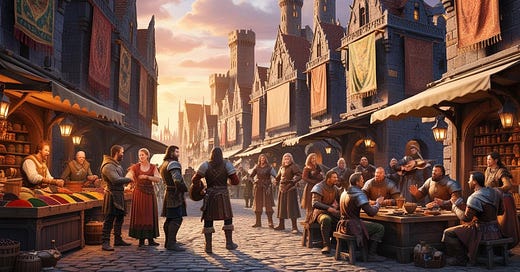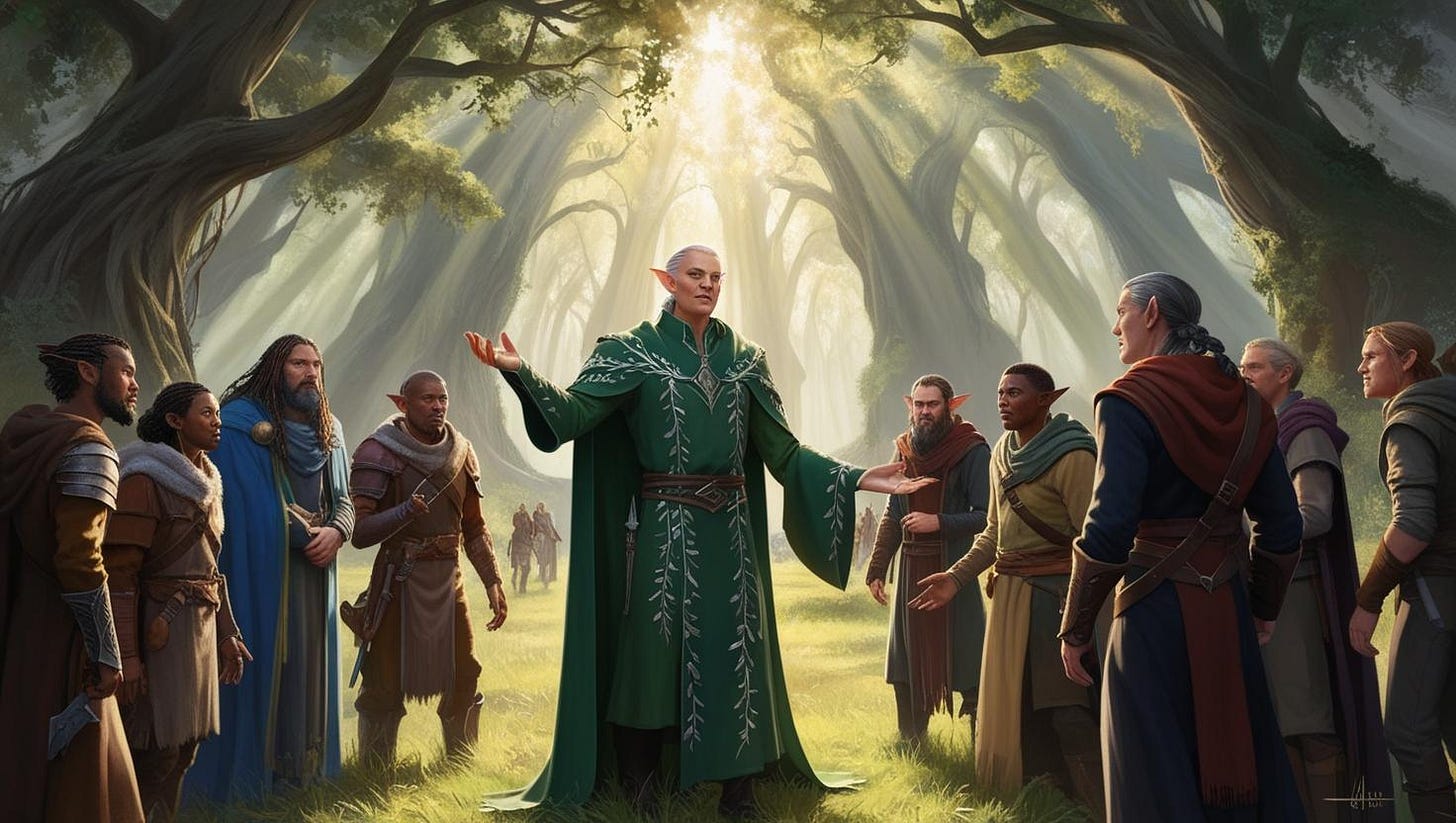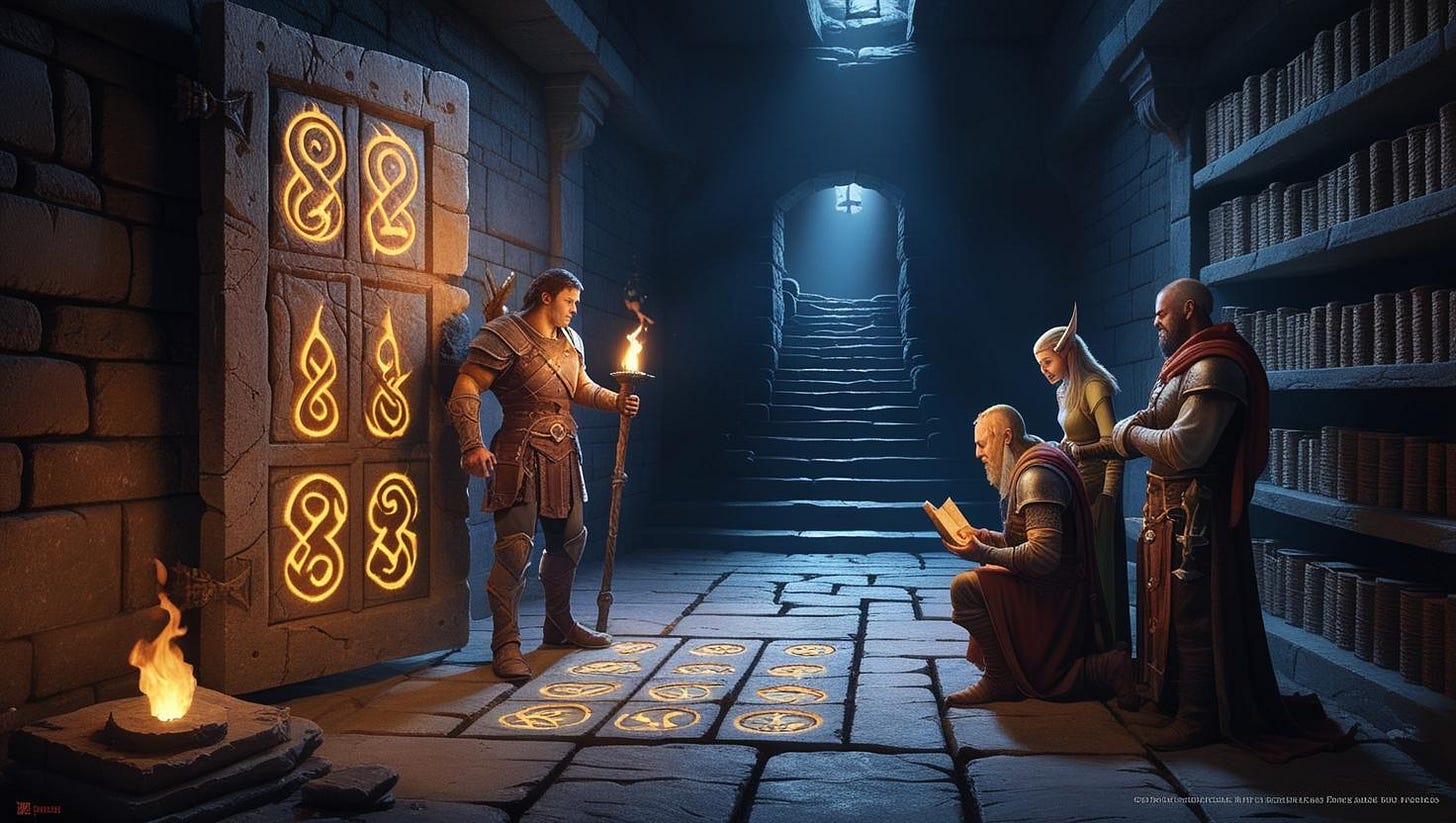Non-Combat Encounters
Keep your sword in your sheath and your deadly spells in your grimoire.
Hi there, you are probably one more mythical creature who enjoys dealing with all your fantasy problems by spilling the blood of the ones who wronged you. This is a wake up call to convince your GM (if you are not one) to come around this time and bring a “smarter” challenge on the table (quite literally). Welcome back to Wyrmwood Studios— in today’s article I wanted to talk about Designing Non-Combat Encounters in TTRPGs. If you missed our last post, at least take a glimpse, because you first have to know what are The Best TTRPG Genres to Design in 2025.
Let’s go.
Why Even Bother with Non-Combat Encounters
Look, I get it— combat is thrilling. You want to roll your dice, swing your sword around, and cast your spells. But hear me out: non-combat encounters can be just as fun. If you’re only focusing on combat, you’re missing out on a chance to add some serious depth to your game.
Non-combat encounters give you the chance to engage with the world in different ways. They can show off your characters’ personalities, explore unique challenges, and experience storylines that don’t rely on battle. And the best part? The game feels more dynamic and real? What was the last dungeon, forest, house you saw with 43 lurking creatures waiting to feast on the first dudes who will enter?
Of course I don’t mean to not have some— let’s try to include the best of both worlds.
Types of Non-Combat Encounters You Can Use
1. Social Challenges: Let the Characters Talk It Out
I am very sure there are some people like me, who prefer to talk their way through problems. Social encounters gives you the chance to flex your role-playing muscles. Whether it’s negotiating with a merchant, navigating politics, or convincing an NPC to help. These can also build the world a bit better and deepen the character relationships.
In my experience, these encounters often lead to unexpected moments. Like trying to talk to a band of marauders out of attacking the town, and getting an invitation to a tea party. It’s moments like these that make social encounters so rewarding. But of course I mean to build a plot and options— always fail forward, and reward the players when they come up with something smart to say.
2. Puzzles: A Test of Brains, Not Brawn
Puzzles might not always feel like a game-changer, but they can be. They engage your players mentally, forcing them to think outside the box. Maybe it’s deciphering an ancient riddle, or finding hidden keys in an old crypt. A good puzzle can make people think, offer a break from combat, and get the collaboration juices flowing.
There is a lot of “fantasy” knowledge laying around to build really good ones actually. Bookshelves, statues, tapestries—to unlock hidden chambers. A well thought puzzle is often a memorable encounter and it increases the players’ commitment. It also diversifies the playstyle to keep more people happy. It’s like an escape room— but different.
3. Exploration and Discovery: Uncover the Secrets of Your World
Non-combat encounters don’t always have to be about a specific challenge. Sometimes it’s about discovery. Hidden locations, lost artifacts, or long-forgotten secrets about the world all create these moments of exploration. Give yourselves the chance to uncover something new that deepens your understanding of the world you are experiencing.
A decaying library deep in the forest for example. No fight or puzzle this time. Just us piecing together the past. Spending “hours” scouring ancient scrolls, slowly unraveling a mystery that tied back to the game’s main plot. Explore something that matters!
4. Moral Dilemmas: Test Your Players’ Morals
I will never stop talking about this. Make non-combat encounters emotional. Throw a meaningful moral dilemma and watch “engaged” people squirm. Should they sacrifice the few to save the many? Or take the risk and protect an innocent life at a great cost? These decisions don’t have to be so dramatic and black-and-white. Do it for the debate and the spark at the table. Increase people interaction and friction by forcing players to choose between saving an entire village or stopping a war for example. No dice— just discussing options, weighing consequences, and getting to connect with the characters.
How to Keep Non-Combat Encounters Alive
So, how do you keep these encounters interesting and fun? The answer is typically; player agency. The very basics of non-combat encounters, start with giving players real stakes and choices. This way they don’t feel like passive observers in their own story.
Whether you’re running any from the above-mentioned encounters make sure the outcome matters. People want consequences to think things through. Even if they like it or not, they get engaged. Even throwing in a time crunch, or adding a third-party NPC with their own agenda helps. The more the players feel like they’re shaping the world, the more invested they’ll be.
One more tip: keep things moving. Non-combat encounters can drag without a clear sense of direction. Momentum is key, and mixing things up is not necessarily a bad thing. Encounters can start as peaceful negotiations and end up with tense showdowns—without any combat involved.
Wrapping Up
Non-combat encounters can be cool in any TTRPG experience. They keep the game from feeling like a hack-and-slash fest, and they give crawlers and players more opportunities to interact with the world.
Do you have any encounter ideas to help fellow GMs? Post it below. Did you like what you just read? Subscribe and find more here and on wyrmwoodstudios.com.









💯 agree! Combat is fun but the game is not always about combat. 😊
Lovely article. I agree that non-combat can be fun and beneficial to the game. It makes it not just about combat.